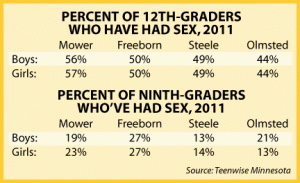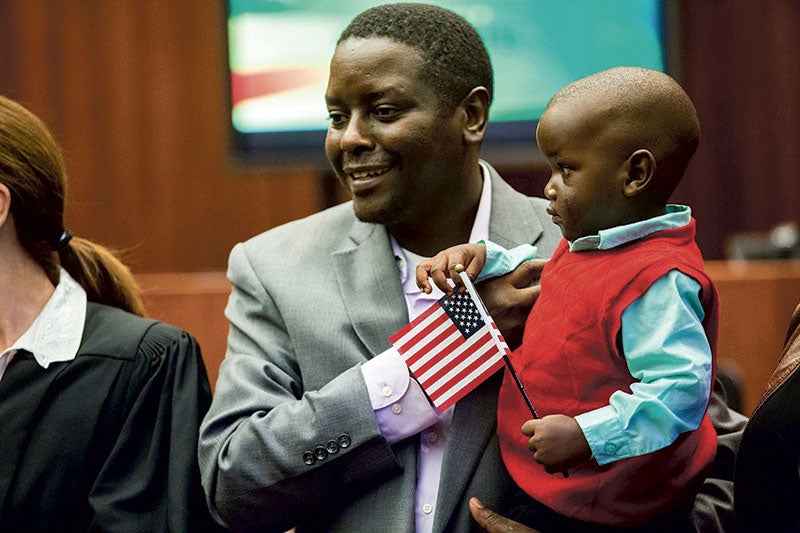Teen pregnancy: STDs a concern with sexually-active teens
Published 12:31 pm Monday, May 9, 2011
Editor’s note: This is the second in a two-part series on sexual health.
Sex.
The topic is often an uncomfortable one, but it’s still a public health concern in Mower County and the only solution may be facing an uneasy subject.
When it comes to teens’ sexual health, pregnancy may only be the tip of the iceberg. Like in the state, the number of reported sexually transmitted diseases is climbing in the county.
From 1996 to 2010, the reported cases of Chlamydia more than doubled in Minnesota. Last year, there were 17,760 reportable cases of STDs in Minnesota — up from 16,912 in 2009, according to the Minnesota Department of Public Health.
In 2009, there were 98 reported cases of Chlamydia in Mower County and 10 reported cases of Gonorrhea. But according to Public Health nurse Janne Barnett, the problem may actually be worse.
“Many people don’t know that they have Chlamydia or Gonorrhea,” she said.
MDH reported people ages 15 to 24 account for 70 percent of STD cases in Minnesota.
“It’s very disproportional … and I don’t think people realize the really long-term health factors,” Barnett said.
Minnesota’s cost of diagnosing and treating Chlamydia in 2010 was estimated at $2.76 million, according to the Minnesota Chlamydia Partnership.
 Chlamydia and other STDs have long-term ramifications and can lead to cancer or infertility. Public health guidelines call for any sexually active person not in a long-term monogamous relationship to be tested for STDs each year.
Chlamydia and other STDs have long-term ramifications and can lead to cancer or infertility. Public health guidelines call for any sexually active person not in a long-term monogamous relationship to be tested for STDs each year.
“That just doesn’t happen,” Barnett said, especially if parents attend doctor’s visits with teens who are sexually active.
Vaccines are available for certain types of STDs, but they only prevent — they don’t treat. Barnett said many parents turn down opportunities to vaccinate and say their child is too young. But, Barnett said, that’s exactly when it’s needed.
“Parents need to think about getting their kids immunized before they become sexually active,” Barnett said.
Last summer there was a summit on how to address Chlamydia rates in Minnesota. Barnett and Public Health Director Margene Gunderson hope a similar conference could be held locally to address teen pregnancy.
“We’re all sexual beings, and we need to think of sexuality in terms of health,” Gunderson said.
Barnett said STDs would be one reason abstinence-only education isn’t preferred.
“You need to be able to talk to your partner if you’re going to be that intimate,” Barnett said.
Carol Holtz, chairwoman of the Department of Family and Internal Medicine at Austin Medical Center, also noted parents and teens need a variety of tools to address sex education.
“It needs to be comprehensive sexual education,” she said.
‘It’s happening’
There’s no question teens are sexually active in Mower County. In 2010, more than half of Mower County high school seniors admitted they’d had sex — including 47 percent more than once — according to the Minnesota Student Survey taken anonymously by students.
“We know kids are being sexually active,” Gunderson said. “We know that they are contracting sexually transmitted diseases because we’re screening for them and finding those. We know it’s happening, but what we are suspecting is that nobody’s talking about it.”
Maryanne Law, director of the Parenting Resource Center, said a high number of working parents are leaving many children and teenagers to fend for themselves after school or during the summer. Without adult supervision, Law said there’s a higher risk of relationships becoming intimate.
Another concern is teens’ decision-making capabilities, even if alcohol and drugs are never involved. Law noted the part of the brain that controls impulses and decision making doesn’t fully develop until age 26.
“They simply do not have the maturity to have those boundaries or impulse controls, so dealing with their sexuality becomes a major challenge,” Law said. “That’s a biological fact that I don’t think a lot of people really think about.”
In order to be successful, there needs to be openness about sex, Barnett said. Even if people tend for abstinence only education, Gunderson said the entire community needs to be on the same page to address the issues — from public health and the Austin Medical Center, to the schools and city leaders.
Gunderson said they may some day hold a summit or significant discussion to address the issue.
Barnett had other advice: Be the person who makes relatives and friends uncomfortable by talking about sex.
“Get the conversation going,” she said. “We’re not helping ourselves by not talking about it.”
Many people simply don’t believe there are problems here. Gunderson noted the schools have other issues and this isn’t at the top of their list.
Even if sex is being talked about, Gunderson argued, the conversation needs to be all-inclusive. Abstinence only education, she and Barnett insisted, is not the answer.
“The conversation really does need to be comprehensive because young people are engaging in sexual activity,” Gunderson said. “Obviously the statistics are showing that.”





